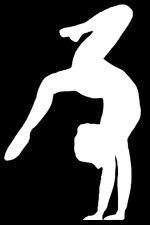
What to think about when working on your flexibility
- Don´t play too fast! Speed is nice, but always make sure to play the exercise well rather than fast. Are all notes in tune? Is your sound good?
- In a hurry? Play exercises on 1st, 3dr, 5th and 7th position (or 2nd, 4th and 6th). I do this when I want to cover more exercises without playing them sloppy. Saves you 50% of the time required for each exercise and only make it 34% less effective. See, that is a 16% gain right there!
- Do it daily! Flexibility and embouchure exercises are essential for all brass players. Make sure it is a part of your daily routine. And then make your daily routine daily!
- Keep embouchure in place. You don´t want to make big movements with your mouth when shifting notes. Look at yourself in a mirror and try to minimize it. Are you unnecessarily good looking? Another good reason to find that mirror.
- Try playing exercises on both trombone and mouthpiece. This is a killer tip. When going back and forth between trombone and mouthpiece, you can really get some basic embouchure stuff in place. Try it.
- Play exercises both slurred as natural legato and staccato with short notes is also a very healthy trick. If your mirror is still around, take a look in it again while playing and try to avoid moving your embouchure around, bo
- th when you play legato and staccato.
- Work on speed. Find a suitable exercise and play it with a metronome, increasing the tempo by 10 bpm and go on until you can´t make it any longer. Then go down 10 bpm and play it again.
- Lightness! Try not to force the notes, just let them bounce out of the bell. Don´t think of the trombone as something to concur, but merely as a tool to express yourself through. Don´t shout, just talk.
- Try to make rhythmical variations. Mpst flexibility exercises (mine too) are based on pitch rather than rhythm. Try to vary the rhythm in your favorite exercises, and see what that does for you. Does a lot for me!
- Use pedal tones. Try involving pedal tones in some of your preferred exercises, maybe by starting or ending on a pedal tone. And try to keep the embouchure in position, even though most players have to do some adjustments to play in the pedal tone range.
- Expand the register. Play exercises that cover a range of up to two octaves (or more), and try to keep the embouchure in position all the way up and down.
- Start from 7th position. it is generally easier to play on the first positions. Starting an exercise on seventh position instead is therefor a good idea for a change. Or try 7-5-6-4-1-3-2. Or 7-1-6-2-5-3-4. I think you get the point!
- Think music. Don´t just play flexibility exercises as if you where in a gym, lifting weights. Make them sound good! Make music.
[wp_eStore_fancy1 id=17]

Go flex!
Did I miss any bullets? Feel free to expand the list in the comments section!
All the best,
Anders
PS. Do you want to get access to my best trombone flexibility exercises?
Check out this book:
[wp_eStore_fancy1 id=17]
2 Comments
-
I love these techniques. I am now putting together a marching band for my school and I will be using the information on this post.
This is great thanks for sharing!
-
Thanks a lot for taking free time in order to publish “14 tips for trombone flexibility | DigitalTrombone”.
Thanks for a second time -Danielle


